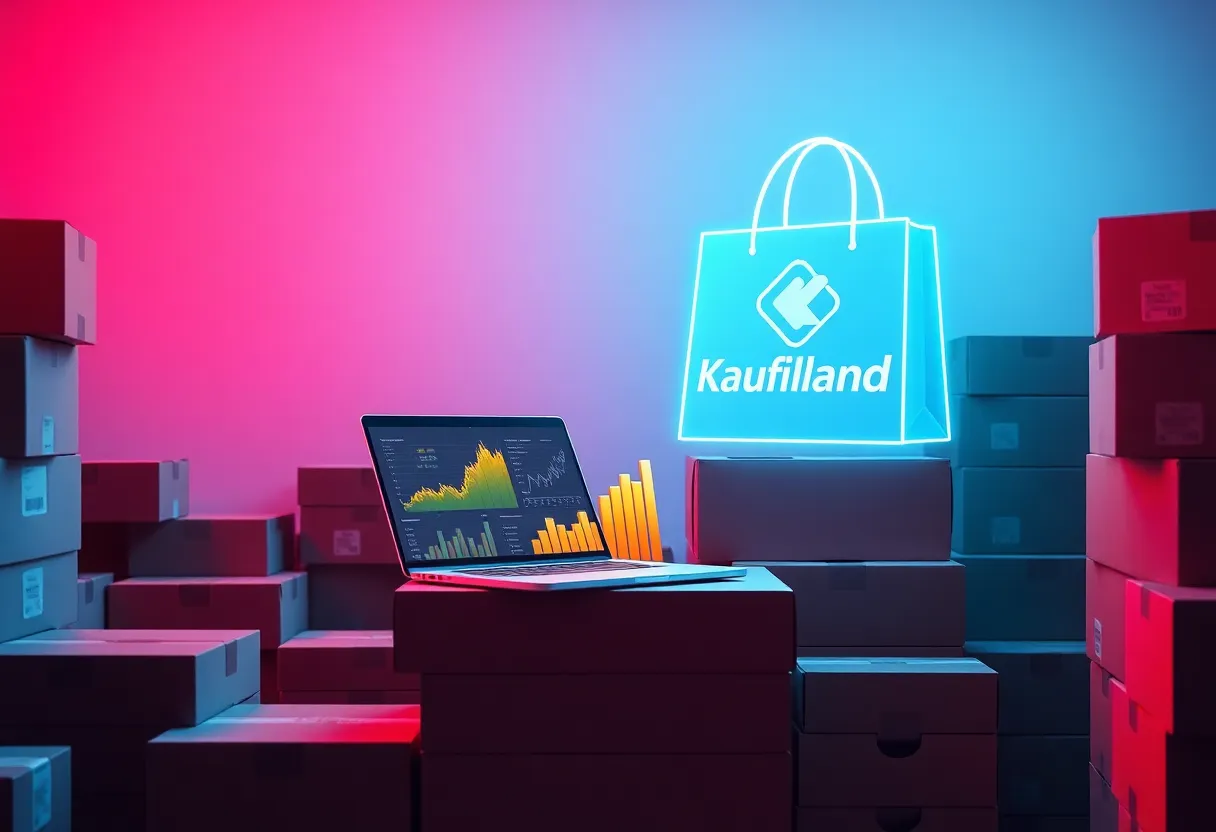Table of Contents
Understanding Kaufland and Shopify Synergy
Did you know that Kaufland serves over 21 million customers weekly across Europe? This retail giant has become a key player in the e-commerce landscape, offering sellers a massive potential customer base. For online merchants, tapping into Kaufland’s market can be a game-changer, but it comes with its own set of challenges.
Shopify, powering over 1 million businesses worldwide, has emerged as a go-to platform for e-commerce entrepreneurs. Its user-friendly interface and robust features make it ideal for sellers looking to expand their reach. However, managing multiple sales channels can quickly become overwhelming without the right tools.
Here’s a quick look at why sellers are eyeing Kaufland integration:
- Expanded customer reach in European markets
- Increased brand visibility
- Potential for higher sales volume
- Access to Kaufland’s established logistics network
But with great opportunity comes great responsibility. Sellers often face these hurdles:
- Keeping inventory synced across platforms
- Managing orders from multiple sources
- Maintaining consistent pricing and product information
- Navigating different marketplace rules and regulations
This is where integration tools like Marketplace Connect come into play, streamlining operations for sellers juggling multiple platforms. By automating key processes, these tools help businesses focus on growth rather than getting bogged down by manual tasks.
Let’s take a closer look at how Kaufland stacks up in the e-commerce world:
| Metric | Kaufland | Industry Average |
|---|---|---|
| Weekly Customer Visits | 21 million | 5 million |
| Online Product Categories | 25+ | 15 |
| Seller Satisfaction Rate | 85% | 72% |
Understanding the synergy between Kaufland and Shopify is crucial for sellers aiming to maximize their online presence. Let’s dive deeper into how this integration works and the benefits it brings to e-commerce businesses.
Check out this video for a quick overview of selling on Kaufland through Shopify:
As we explore the ins and outs of Kaufland integration with Shopify, keep in mind that the right tools can make all the difference in managing your multi-channel e-commerce strategy effectively.
Setting Up Kaufland Integration on Shopify
Getting started with Kaufland on your Shopify store is easier than you might think. Let’s walk through the key steps to get you up and running.
First things first, you’ll need to gather your API credentials from Kaufland. This usually involves logging into your Kaufland seller account and navigating to the API settings section. Once you have these in hand, you’re ready to connect to Shopify.
- Log into your Shopify admin panel
- Navigate to the Apps section
- Search for a Kaufland integration app (like Marketplace Connect)
- Install the app and follow the setup wizard
During setup, you’ll be asked to input your Kaufland API credentials and grant the necessary permissions. This allows the integration to sync your products and orders between platforms.
Now comes the fun part – configuring your product listings. Most integration apps will automatically pull your existing Shopify products into Kaufland, but you’ll want to double-check a few things:
- Ensure product titles and descriptions meet Kaufland’s requirements
- Map your Shopify categories to Kaufland’s category structure
- Set competitive prices for the Kaufland marketplace
- Upload high-quality images that comply with Kaufland’s standards
Taking the time to optimize these elements can significantly boost your visibility and sales on Kaufland.
Optimizing Inventory Management Across Platforms
One of the biggest challenges of selling on multiple channels is keeping your inventory in sync. Nobody wants to oversell and disappoint customers. Here’s how to stay on top of your stock levels:
Let’s check out this video for some broader insights on retail infrastructure that apply to multi-channel selling:
Real-time inventory updates are crucial. Most integration tools, like Marketplace Connect, handle this automatically. When an item sells on Kaufland, it’s instantly reflected in your Shopify stock levels, and vice versa.
- Set up alerts for low stock levels
- Use buffer stock to prevent overselling
- Regularly audit your inventory across all channels
Handling stock discrepancies can be tricky. If you notice mismatches between Shopify and Kaufland, don’t panic. Here’s what to do:
- Pause listings on both platforms
- Conduct a physical inventory count
- Update stock levels manually in both systems
- Re-enable listings once everything is accurate
Setting buffer stock is a smart move for multi-channel sellers. This extra inventory acts as a safety net, reducing the risk of overselling when orders come in simultaneously from different platforms.
Streamlining Order Processing and Fulfillment
Efficient order management is key to keeping your customers happy and your business running smoothly. Here’s how to streamline your processes:
| Task | Manual Process | Automated Process |
|---|---|---|
| Order Sync | Copy orders from Kaufland to Shopify | Instant sync via integration app |
| Status Updates | Update each platform separately | Automatic updates across all channels |
| Shipping Labels | Generate labels on each platform | Create labels from a single dashboard |
Centralizing your order management is a game-changer. Instead of juggling multiple dashboards, you can view and process all your Kaufland orders right from your Shopify admin. This saves time and reduces errors.
Automating order status updates is another big time-saver. When you mark an order as shipped in Shopify, that information is automatically pushed to Kaufland, keeping your customers in the loop without any extra effort on your part.
- Use integrated shipping solutions for faster label creation
- Set up automatic tracking number sync between platforms
- Create standardized packing processes for consistency
By implementing these strategies, you’ll be well on your way to mastering Kaufland integration with Shopify. Remember, the goal is to create a seamless experience for both you and your customers. With the right tools and processes in place, you can expand your reach on Kaufland while keeping your operations streamlined and efficient.
Maximizing ROI from Kaufland-Shopify Integration
Integrating Kaufland with Shopify opens up exciting opportunities for e-commerce businesses. Let’s dig into how this partnership can boost your bottom line.
First, let’s look at some key performance indicators to keep an eye on:
- Sales volume on Kaufland vs. other channels
- Average order value
- Customer acquisition cost
- Repeat purchase rate
- Inventory turnover
Tracking these metrics helps you understand how well Kaufland is performing compared to your other sales channels. This data-driven approach allows you to make smart decisions about where to focus your efforts.
Customer satisfaction often sees a nice bump with marketplace integrations. Here’s why:
- Faster order processing
- More accurate inventory updates
- Consistent product information across channels
- Streamlined returns handling
Happy customers tend to come back and spend more. Plus, they’re more likely to leave positive reviews, boosting your visibility on Kaufland.
On the operations side, integrating Kaufland with Shopify can lead to some serious cost savings:
| Area | Potential Savings |
|---|---|
| Order management | 30-50% time reduction |
| Inventory updates | 60-80% fewer errors |
| Customer service | 20-40% fewer inquiries |
These efficiency gains free up your team to focus on growth strategies instead of manual data entry. Tools like Marketplace Connect can automate many of these processes, making the integration even smoother.
By leveraging Kaufland’s massive customer base and Shopify’s powerful e-commerce tools, you’re setting yourself up for success in the German market and beyond. Just remember to keep a close eye on your metrics and continuously optimize your approach.
Wrap-up
Integrating Kaufland with Shopify opens up a world of possibilities for e-commerce sellers. By tapping into this massive German marketplace, you can reach millions of new customers and boost your sales potential. But let’s be real – managing multiple sales channels can be a headache without the right tools.
That’s where solutions like Marketplace Connect come in handy. This app streamlines the whole process, syncing orders and inventory across platforms so you don’t have to juggle everything manually. Pretty nifty, right?
As online shopping keeps growing, multi-channel selling is becoming the norm. Sellers who can efficiently manage inventory and orders across marketplaces will have a big advantage. The key is finding ways to automate the busy work so you can focus on growing your business.
Whether you’re just getting started with Kaufland or looking to optimize your existing integration, the right tools can make a world of difference. Why not explore options that could save you time and help scale your e-commerce operation? Your future self will thank you.
Got questions about Kaufland integration or multi-channel selling? Check out our FAQ section below for more insights.
Common Questions About Kaufland-Shopify Integration
How much does it cost to integrate Kaufland with Shopify?
The cost varies depending on the integration solution you choose. Some apps like Marketplace Connect start at $19.99 per month and offer a free trial. It’s best to compare a few options to find the right fit for your budget and needs.
What are the technical requirements for Kaufland-Shopify integration?
You’ll need an active Shopify store and a Kaufland seller account. Most integration apps handle the technical side, but you may need to generate API keys or tokens from both platforms. A stable internet connection is also crucial for syncing data reliably.
How do I troubleshoot common syncing issues?
If you encounter syncing problems:
- Check your internet connection
- Verify API keys are correct and haven’t expired
- Ensure you have the latest version of the integration app
- Review any error messages in the app’s dashboard
If issues persist, contact the app’s support team for assistance.
What support resources are available for sellers?
Most integration apps offer documentation, video tutorials, and email support. Some provide live chat or phone support for higher-tier plans. Kaufland also has a seller help center with guides on marketplace policies and best practices.
Can I manage multiple sales channels through one interface?
Yes, many integration solutions allow you to manage multiple channels from a single dashboard. For example, Marketplace Connect supports various marketplaces alongside Kaufland, streamlining your multi-channel selling operations.
How often does inventory sync between Shopify and Kaufland?
Sync frequency depends on the integration app you’re using. Some update in real-time, while others sync at set intervals (e.g., every 15 minutes). Check the app’s features or settings to find the specific sync timing for your setup.





